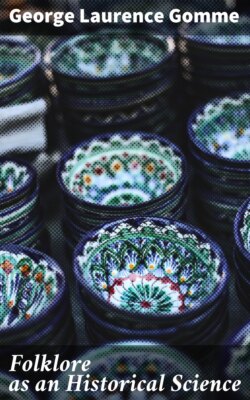Читать книгу Folklore as an Historical Science - George Laurence Gomme - Страница 9
На сайте Литреса книга снята с продажи.
Оглавление"He that would England win
Must at Weybourn Hope begin."[46]
This is an example of the forcible revival of an ancient tradition to suit a later fact, and is evidence of the enormous impression which the event to which it refers had upon the locality. Kett's rebellion was one thing to the nation at large and quite another thing to this district of Norfolk, and the great events of the tenth century preserved in legend were equated with the minor events of the sixteenth century, thus enabling us to understand better the depth of the local feeling which produced these events.
PLAN OF THE SITE OF THE "HEAVEN WALLS" AT LITLINGTON, ROYSTON, CAMBRIDGESHIRE
Both local and personal traditions are of interest in the unravelling of the meaning of historical events, and the forces at the back of them, and I will add a note of one or two examples of those humbler traditions which confirm or enhance the value of the historical record. They are of the greatest importance if correctly understood. They include such examples, for instance, as Mr. Kemble notes when he says, "I have more than once walked, ridden, or rowed, as land and stream required, round the bounds of Anglo-Saxon estates, and have learned with astonishment that the names recorded in my charter were those still used by the woodcutter or the shepherd of the neighbourhood."[47] This is remarkable testimony to the persistence of tradition. It is the commencing point of a whole series of examples which go to show that embedded in the memories of the people, and supported by no other force but tradition, there are innumerable traces of historic fact.[48]
A stage forward, in the same class of tradition, are those examples of special names which indicate an important or impressive event, the real nature of which is only revealed by modern discovery. Thus perhaps the "White Horse Stone" at Aylesford, in Kent, the legend of which is that one who rode a beast of this description was killed on or about this spot,[49] may take us back to the great battle at Crayford, where Horsa was killed. Another kind of local tradition is perhaps more instructive. Immediately contiguous to the north side of the Roman road at Litlington, near Royston, were some strips of unenclosed, but cultivated, land, which in ancient deeds from time immemorial had been called "Heaven's Walls." Traditional awe attached to this spot, and the village children were afraid to traverse it after dark, when it was said to be frequented by supernatural beings. Here is subject for inquiry. Both words in the name are significant. Why the allusion to Heaven; why is a field called walls? The problem was solved in 1821, for in that year some labourers were digging for gravel on this spot, and they struck upon an old wall composed of flint and Roman brick. This accidental discovery was followed up by Dr. Webb, and the wall was found to enclose a rectangular space measuring about thirty-eight yards by twenty-seven, and containing numerous deposits of sepulchral urns containing ashes of the dead. It was clear from the results of the excavations that here was one of those large plots of ground environed by walls to which the name of ustrinum was given by the Romans,[50] a fact which was preserved in the name long after the site had lost every trace of its origin.
LITLINGTON FIELD
I will refer to one more local example. In Dorsetshire and Wiltshire fairs are held upon sites which are often marked by the remains of ancient works, or distinguished by some dim tradition of vanished importance.[51] One has only to refer to the history of the market as "a contribution to the early history of human intercourse" as Mr. Grierson puts it,[52] and to the extremely important and archaic constitution of the market, a glimpse of which has been afforded by Sir Henry Maine, alone among scholars who have investigated earliest English institutions, to know how valuable such a note as this must be if it can be confirmed by extended research. Local investigation of these places and their traditions would, no doubt, lead to many points in the tribal settlement of the district, an important fact of history nowhere found in history.
No one, I think, taking into consideration this view of the relationship of local and personal traditions to history will deny that history is likely to gain much by the proper interpretation of such traditions. Every yard of British territory has its historic interest, and there are innumerable peaks above the general level which should be worth much to national history. Every epoch of British history has its great personage, who in popular opinion stands out from among his fellows. When once it is understood that traditions attaching to places and persons yield facts of a kind worth searching for, there will arise the desire to obtain all that is now obtainable from this source, and to add thereto the deductions to be drawn from their geographical distribution.
